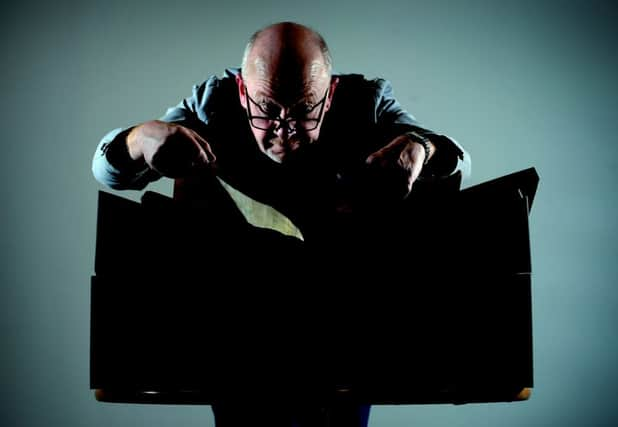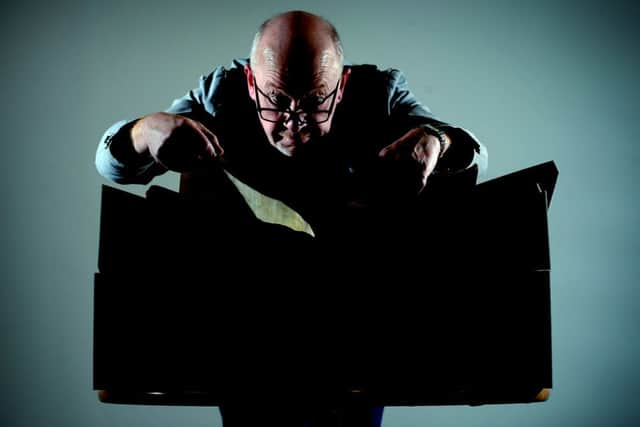Trailblazer who put nation on map 500 years ago


It was almost 500 years ago when, by command of the court of Queen Elizabeth I, Christopher Saxton embarked on the first survey of England of its kind.
So rare and valuable are the fruits of the Leeds-born cartographer’s labour that his atlases - of which 47 are known to exist - are often kept under lock and key and can be seen only by private appointment.
Advertisement
Hide AdAdvertisement
Hide AdBut as a rare treat for history enthusiasts, the city’s Central Library is putting one of its most precious items on display as part of an inaugural festival.


“He was a very important man,” said Phil Wilde, a senior library assistant.
“To map collectors and cartography fans, this is the Holy Grail. It was used as the basis for maps of the country for almost 200 years after it was produced, until it was replaced by Ordnance Survey. Even by today’s standards it’d pretty accurate.”
Mr Saxton toured the length and breadth of the nation in his quest to produce each of the maps, which depict every hamlet, village, town and city. Each map also comes complete with illustrations of dangers travellers face, such as sea monsters lurking just off the coastline.
Advertisement
Hide AdAdvertisement
Hide AdAfter drawing his findings they were engraved by fellow Yorkshireman Augustine Ryther.
The quality of their work was so good, in fact, that the Virgin Queen is thought to have purposely hid them away while England was still at war with the Spanish. Historical accounts suggest the monarch feared the detailed maps would give the enemy an advantage and the definitive version was not published in 1590.
As a fitting tribute to both men, the map of Yorkshire as it was in 1577 forms the centrepiece of the exhibit.
Visitors may be struck by just how close the 16th-century version of God’s own county looks when compared with the present day. It might be more of a green suit than a green belt, but the cities of ‘Ledes’, ‘Sheafeld’ and ‘Braforth’ all feature.
Advertisement
Hide AdAdvertisement
Hide Ad“He certainly did Yorkshire proud, but of course he would,” said Mr Wilde.
“What’s incredible is that he captured all of the little areas. I grew up in Guiseley and nearby there’s this tiny area Hawksworth, nearly 400 years ago Saxton has it marked down on the map.”
The Saxton Atlas is just one of the oft-overlooked treasures of Leeds’ city centre library which will be displayed during the first ever Library Festival, which launches on Monday.
Members of the public will also get the chance to glimpse a Cicsterian prayer book, printed in Paris in 1516 and thought to be one of the last surviving books from Kirkstall Abbey. Other gems include a collection of Vogue magazines from the swinging sixties, and vintage posters and programmes from Leeds theatres and venues.
Advertisement
Hide AdAdvertisement
Hide Ad“It’s all about reminding people of what we have here,” said Lisa Faulks, of the Leeds libraries and information team.
“Our tagline is ‘taking the shhh out of libraries’. We’re challenging preconceptions to show we’re not just about books.”
THE SAXTON Atlas came into the possession of Leeds Central Library in 1951, yet exactly how it did remains something of a mystery.
Four years earlier, London auctioneer Sotheby’s sold one of the map collections for the knock-down price of £278. It was offered to the library one year later for almost double the price.
Advertisement
Hide AdAdvertisement
Hide AdRecords of correspondence between the city and the anonymous buyer show the library refused at first, though this is thought likely to be the atlas which then found its way into the Leeds Central archive.
Visit www.leeds.gov.uk/leisure/Pages/libraryfest.aspx for a programme of events taking place as part of the first-ever Leeds library festival.